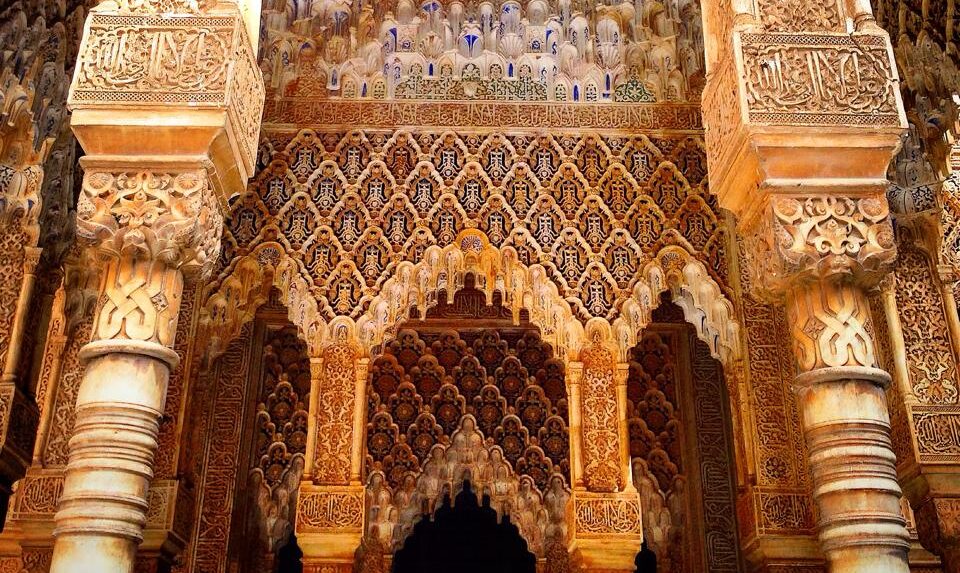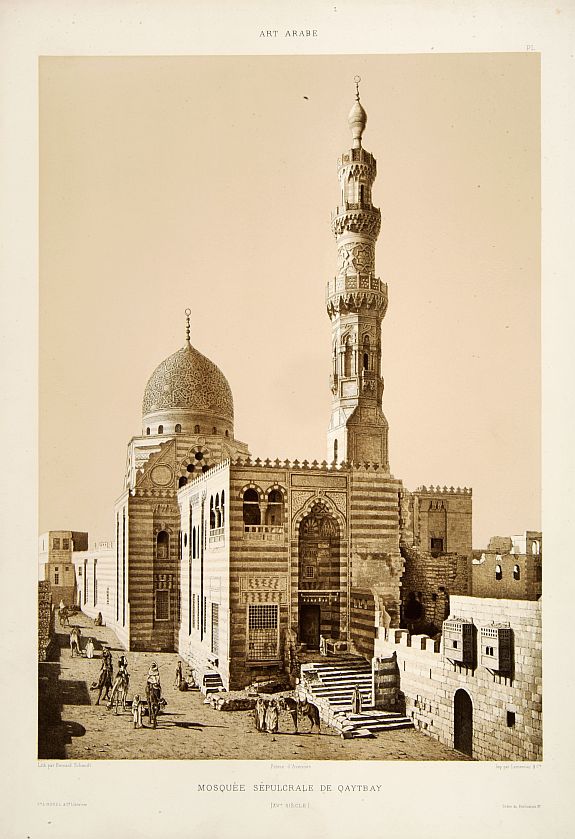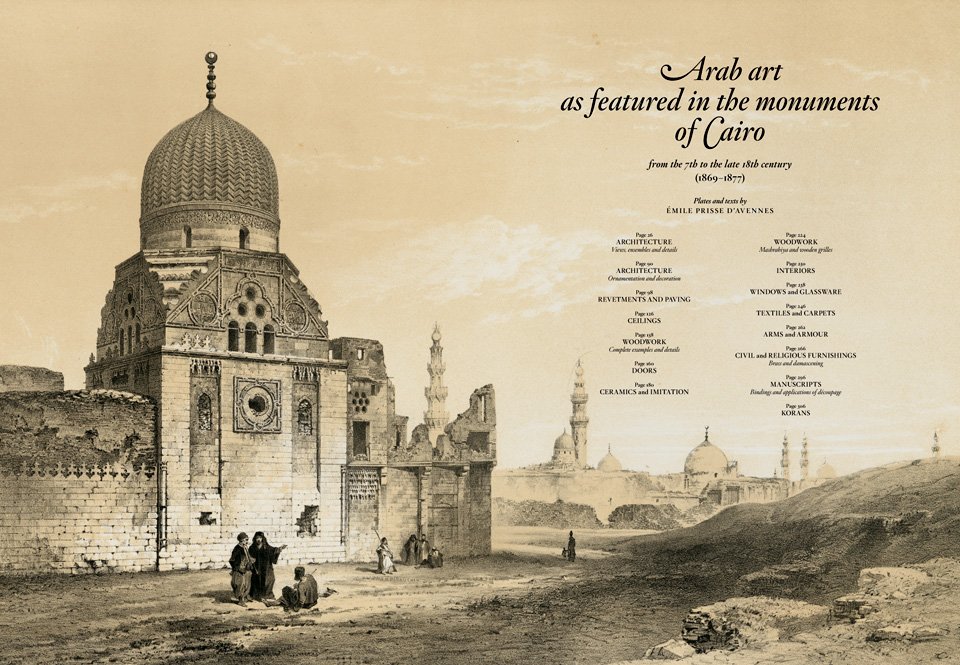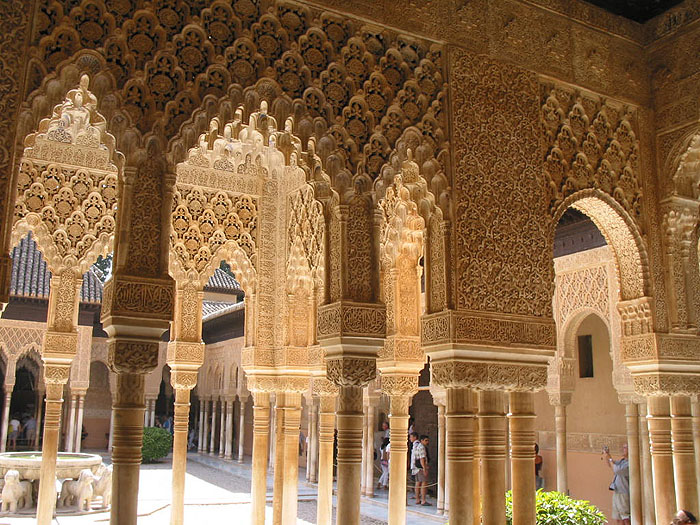Architecture

July 4, 2017
Published: 2002
 The first of the three great shrines of Islam is the Ka’ba at Mecca. For Muslims, this mosque is the holiest spot on Earth. The mihrabs of all mosques are aligned with the Ka’ba so that all Muslims pray in Mecca’s direction.
The first of the three great shrines of Islam is the Ka’ba at Mecca. For Muslims, this mosque is the holiest spot on Earth. The mihrabs of all mosques are aligned with the Ka’ba so that all Muslims pray in Mecca’s direction.
The whole of Islam can be seen as the spokes of a wheel radiating from the Ka’ba. This picture shows the rite of circumambulation, one of the rites of the hajj or pilgrimage. The lines inscribed in the pavement are circular as well.
The second of the great Islamic shrines is the Mosque of the Prophet Muhammad (peace be upon him) in Madina, Saudi Arabia. The Prophet founded this mosque in 622, and he is buried under its floor. In 707, under the Umayyad caliph, al-Walid I, the mosque, including the Tomb of the Prophet’s enclosure, was enlarged.
The mosque was decorated with marble and mosaics of gold glass that represented trees and buildings. These decorations covered the walls of the open courtyard and the colonnaded sanctuary against the south wall. The mosque has been redecorated by the Abbasids, the Mamluks, and the Ottomans. Most recently, the entire mosque was refurbished and enlarged by King Fahd of Saudi Arabia.
The rectangular mosque enclosure has five minarets and a large green dome. The mihrabs are Mamluk and Ottoman. With its bipartite division and axis planning, this mosque became the prototype for subsequent Islamic religious buildings. The prototype is called an “Umayyad hypostyle mosque.”
 Al Sakhra Mosque Constructed 680-692 CE. The last of the three great shrines of Islam is Aqsa Mosque in Jerusalem. The Rock’s Dome, a masterpiece of world architecture in Jerusalem, is yet another Islamic holy site. The Dome of the Rock is the crowning jewel of the Like the Taj Mahal in India and the Alhambra in Spain; it is a celebrated Muslim art example. The Dome of the Rock was built in 680 – 692 A.D./C.E. and thus had the unique distinction of being chronologically the first monument of the Muslim civilization.
Al Sakhra Mosque Constructed 680-692 CE. The last of the three great shrines of Islam is Aqsa Mosque in Jerusalem. The Rock’s Dome, a masterpiece of world architecture in Jerusalem, is yet another Islamic holy site. The Dome of the Rock is the crowning jewel of the Like the Taj Mahal in India and the Alhambra in Spain; it is a celebrated Muslim art example. The Dome of the Rock was built in 680 – 692 A.D./C.E. and thus had the unique distinction of being chronologically the first monument of the Muslim civilization.
The structure is lavishly faced in brilliantly colored ceramic tiles and is surmounted by a massive golden dome which has just been completely restored. The Dome of the Rock was built by Abd al-Malik bin Marwan, seven years after he has proclaimed the Muslim civilization’s seventh caliph. His family became known as the Umayyad Dynasty. They were centered in Damascus and ruled the region for 110 years, from Casablanca to Khurasan. Like the Medicis in Florence, some seven hundred years later, the Umayyads were great art and contemporary craft sponsors. Tradition says that this is the same rock used in the sacrifice of Abraham. And later tradition says that this same rock was the point from which the Prophet Muhammad ascended to heaven on the mystic Mount Buraq. This ascension is called “Mi’raj.” The Dome of the Rock is a unique masterpiece of Muslim art.
 The Taj Mahal (Crown of the Palace) was built in Agra, India, for Mumtaz Mahal, the favorite wife of Shah Jahan. Considered the greatest masterpiece of Indo-Islamic architecture, the mausoleum was constructed during the years 1632-1648. With a profile as distinct as that of the Tower of Pisa, the Pyramids, or the Eiffel Tower, the Taj Mahal has become an icon for the country in which it stands.
The Taj Mahal (Crown of the Palace) was built in Agra, India, for Mumtaz Mahal, the favorite wife of Shah Jahan. Considered the greatest masterpiece of Indo-Islamic architecture, the mausoleum was constructed during the years 1632-1648. With a profile as distinct as that of the Tower of Pisa, the Pyramids, or the Eiffel Tower, the Taj Mahal has become an icon for the country in which it stands.
 With its architectural purity and simplicity, Tunisia’s Great Mosque of Qairawan has been called the ancestor of all mosques built in western Islamic lands. Dating from Doors cut in a black stone wall leads to a courtyard. In the back of the courtyard is a huge hall punctuated on its axis by two cupolas.
With its architectural purity and simplicity, Tunisia’s Great Mosque of Qairawan has been called the ancestor of all mosques built in western Islamic lands. Dating from Doors cut in a black stone wall leads to a courtyard. In the back of the courtyard is a huge hall punctuated on its axis by two cupolas.
 The almost luminous clarity of the mosque’s composition is a striking illustration of the ideals and way of life of early Islam, writes Oleg Grabar in The Genius of Arab Civilization. The exterior is without decoration. Interior decoration is limited to the domical area over the mihrab, which is ornamented with luster tiles imported from Iraq’s imperial capital. The wooden minbar (pulpit) is the oldest preserved minbar in all words deleted the Islamic world. Grabar writes that although some features at Qairawan, like its domes and minaret, are typical of western Islamic architecture. The mosque’s essential elements could be found anywhere in the Islamic world, from Central Asia’s steppes to Morocco. According to Grabar, the monument’s shape and size emphasize the unity of the community of the faithful. All are equal in the single large space at Qairawan.
The almost luminous clarity of the mosque’s composition is a striking illustration of the ideals and way of life of early Islam, writes Oleg Grabar in The Genius of Arab Civilization. The exterior is without decoration. Interior decoration is limited to the domical area over the mihrab, which is ornamented with luster tiles imported from Iraq’s imperial capital. The wooden minbar (pulpit) is the oldest preserved minbar in all words deleted the Islamic world. Grabar writes that although some features at Qairawan, like its domes and minaret, are typical of western Islamic architecture. The mosque’s essential elements could be found anywhere in the Islamic world, from Central Asia’s steppes to Morocco. According to Grabar, the monument’s shape and size emphasize the unity of the community of the faithful. All are equal in the single large space at Qairawan.
 In mosques like the one at Qairawan, political matters were settled, teaching was expounded, and men were drafted into the army. With its efficient architectural planning and its responsiveness to social needs, the mosque was one of the unique cultural contributions of the Arabs. Located in Samarra, Iraq, the Great Mosque of al-Mutawakkil (reign 847 – 861) is also known as The Spiral (al-Malweyya). The mosque’s 165-foot high minaret is located about 90 feet from the mosque’s north side. The base of the minaret initially was connected to the mosque with a viaduct.
In mosques like the one at Qairawan, political matters were settled, teaching was expounded, and men were drafted into the army. With its efficient architectural planning and its responsiveness to social needs, the mosque was one of the unique cultural contributions of the Arabs. Located in Samarra, Iraq, the Great Mosque of al-Mutawakkil (reign 847 – 861) is also known as The Spiral (al-Malweyya). The mosque’s 165-foot high minaret is located about 90 feet from the mosque’s north side. The base of the minaret initially was connected to the mosque with a viaduct.
Recommended Posts

Women’s Rights to Own Property
January 20, 2018

Navigation
January 20, 2018

Algebra
July 4, 2017

